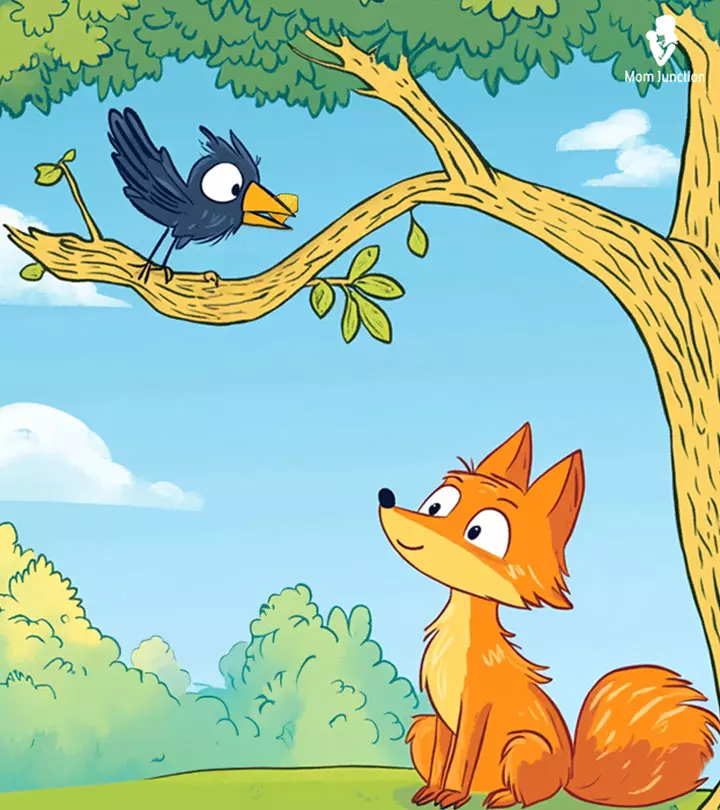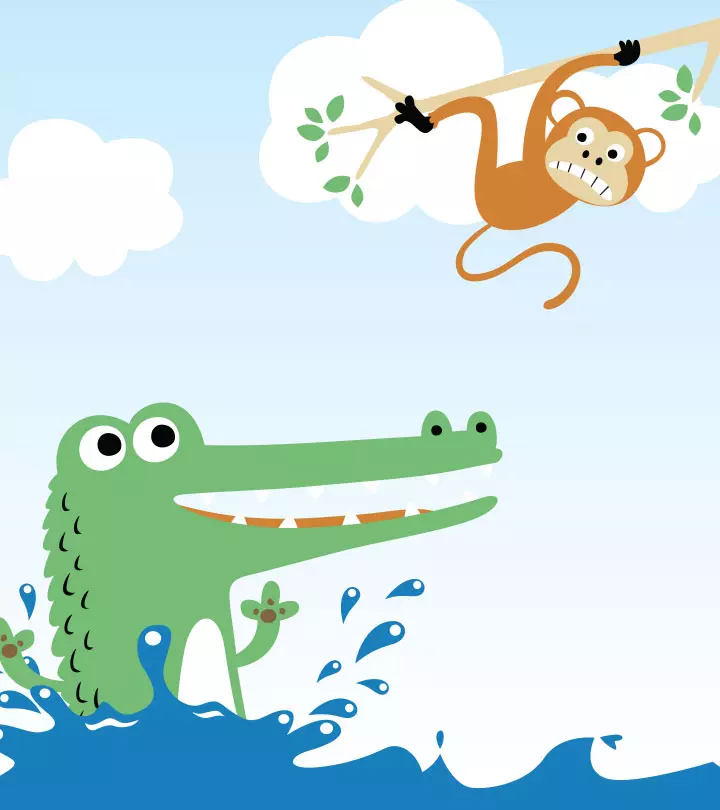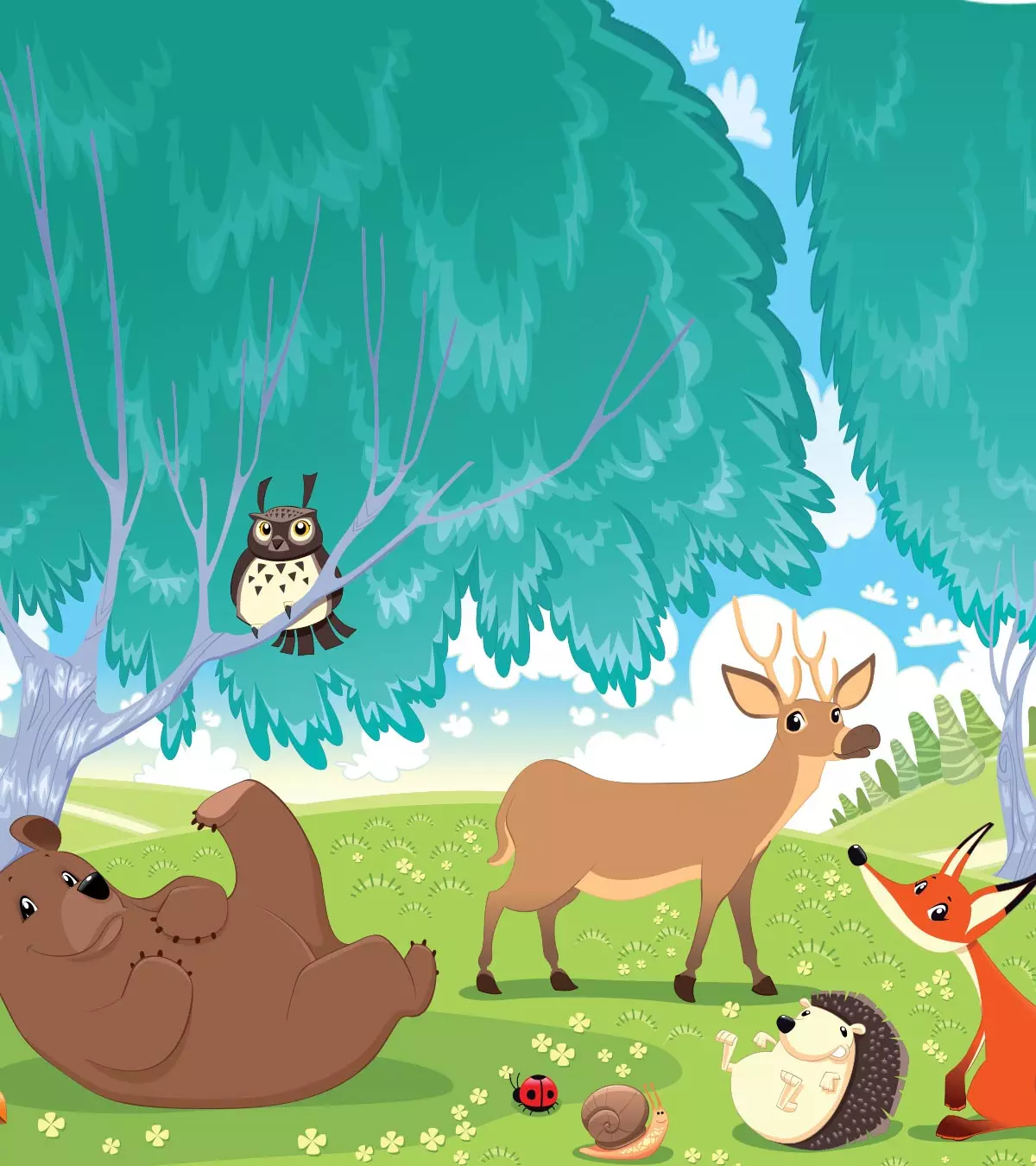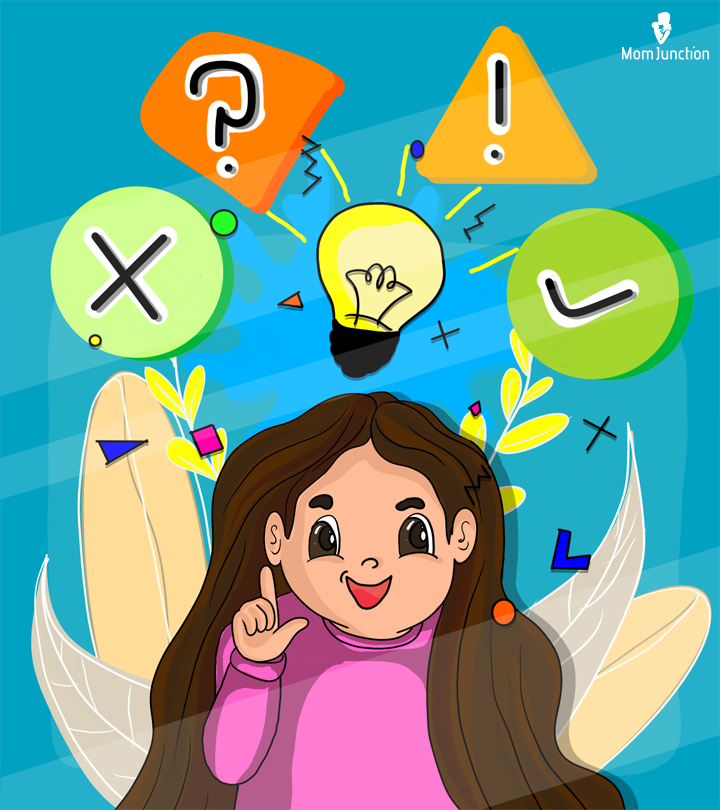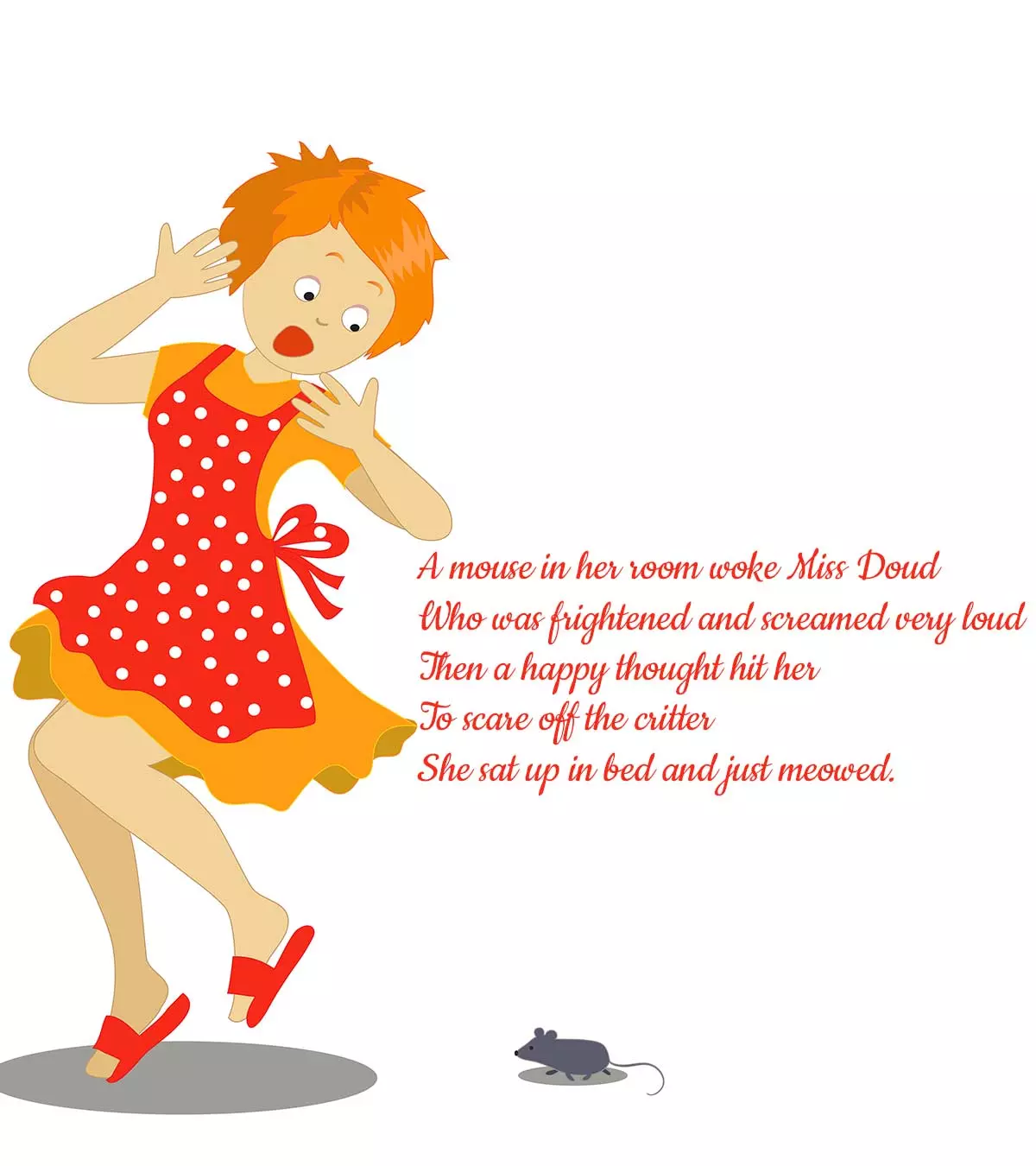
Image: MomJunction Design Team
A limerick is a five-line funny verse that follows the rhythm of AABBA. The poem’s A-lines are longer and rhyming, while the B-lines are shorter and have the same rhythmic structure. Limerick poems for kids are mostly humorous and easy to memorize, making them a popular category in children’s literature. These poems can be amusing and lively, and they’re also a great way to boost creativity and enhance language skills. If you want to teach limericks to your child to develop their imagination through poetry, our post demonstrates how to write limericks and provides a list of a few limericks for children.
Key Pointers
- Limerick is a poem style with five funny verses following the AABBA rhythm.
- These poems are humorous and easy to memorize, making them suitable for younger children.
- Writing a Limerick requires creativity, wit, and rhyming words of a similar theme.
- Star by Kaitlyn Guenther and Friendship by Steve Mckee are examples of famous limerick poems.
- You can encourage children to write limerick poems to boost their imagination and creative writing skills.
How To Write Limericks For Children?
Writing a limerick poem is a delightful and valuable exercise that combines creativity, humor, and linguistic skill. An anonymous blogger shares the experience of writing sonnets, particularly limericks while in college. The blogger says, ‘After lots of reading and watching videos, I hoped I was ready. I was able to come up with two limericks for the assignment. Through it all though, the biggest barrier to writing a limerick was myself. It got easier when I simply just wrote a limerick and tried my best (i).”
Therefore, once you begin writing a poem, you will know what you are good at. But to begin with, here are four simple steps to write laughter-inducing and straightforward limericks for kids.
1. Come up with an idea
Reading limericks will give you ideas to write your poem. Also, it will help you figure out the use of rhyming words in the right way. You can even brainstorm ideas related to a recent incident that brought you mirth. For instance, ‘What if we had wings?’ or ‘What if your pet could talk?’ Alternatively, you can explore simpler prompts such as animals, nature and adventures, silly situations, school life, classroom antics, and instances about family or friends.
2. Start writing the first line
Once you have an idea, you can begin penning down the first line of the stanza. Writing the first line is pretty easy, as it should end with a subject. It could be a name, a place, or a thing. As soon as you finish the first line, you can think of a quirky situation and a funny twist to continue the poem.
 Did you know?
Did you know?3. Think of the rhyming words
Find the rhyming words to the last word of the first line. You can use a dictionary of rhyming words to find the most appropriate words to go with the subject and create your rhyme.
4. Follow the rhythm
Weave stories in the poem and make it funny and witty, but make sure it follows the rhythmic scheme of AABBA. The rhythm is called anapaestic. You need not go into its depth, just remember that the A-lines should have three beats, and B-lines should have two. Here’s the tone:
da DUM da da DUM da da DUM
da DUM da da DUM da da DUM
da DUM da da DUM
da DUM da da DUM
da DUM da da DUM da da DUM
11+ Limerick Poems For Kids
1. A Mouse In Her Room
A mouse in her room woke Miss Doud
Who was frightened and screamed very loud
Then a happy thought hit her
To scare off the critter
She sat up in bed and just meowed.
2. There Was An Old Man Of Dumbree by Edward Lear
There was an old man of Dumbree,
Who taught little owls to drink tea;
For he said, ‘To eat mice,
Is not proper or nice,’
That amiable Man of Dumbree.
3. A Circus Performer Named Brian
A circus performer named Brian
Once smiled as he rode on a lion.
They came back from the ride,
But with Brian inside,
And the smile on the face of the lion.
4. The Bicycling Poodle
The bicycling poodle he saw
Made the cop on the beat drop his jaw;
It was easy to tell
That it rode rather well,
Though its hand signals truly were paw.
5. Young Fellow Named Matt
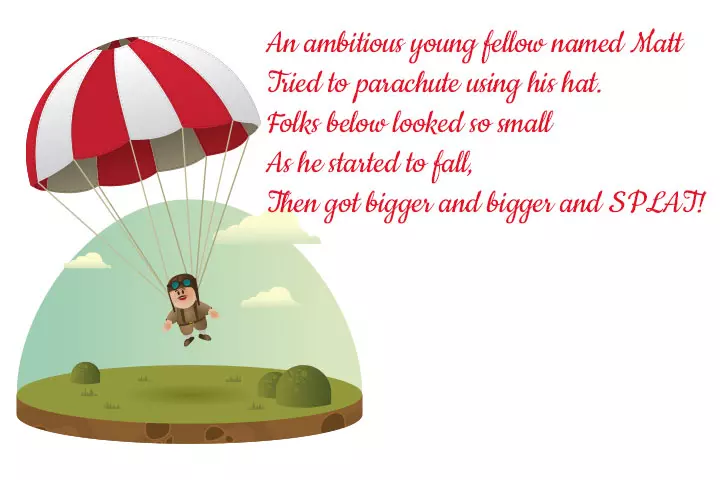
6. Pirate Of Boulder
There was a bold pirate of Boulder
Whose cutlass was slung from his shoulder.
He’d mighty fine notions
Of plundering oceans,
But his mom said: “Perhaps, when you’re older.
 Trivia
Trivia7. Easter Bunny by Terry Hoffman
I’m in love with that soft Easter bunny,
He’s so cute and sometimes funny.
He delivers those eggs,
On his long bouncy legs,
And he sure doesn’t do it for money.
8. Star by Kaitlyn Guenther
There was once a wonderful star
Who thought she would go very far
Until she fell down
And looked like a clown
She knew she would never go far.
9. Baby Lou
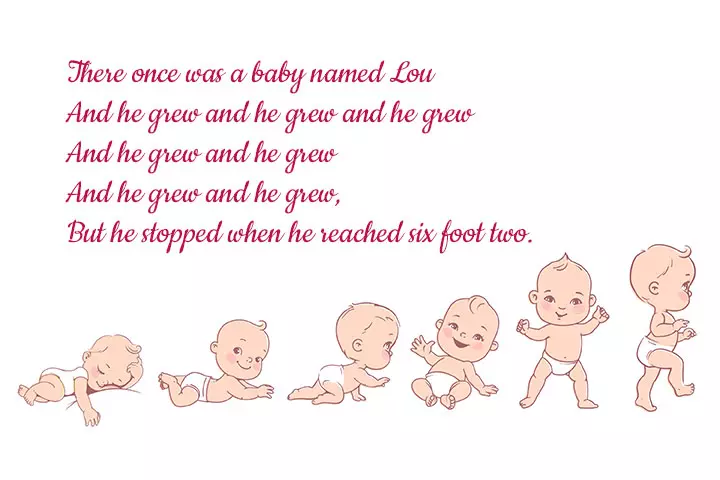
10. The Man From Peru
There once was a man from Peru
Who dreamt that he swallowed his shoe
He woke up in fright
In the mid of the night
To learn that his dream has come true.
11. Friendship by Steve Mckee
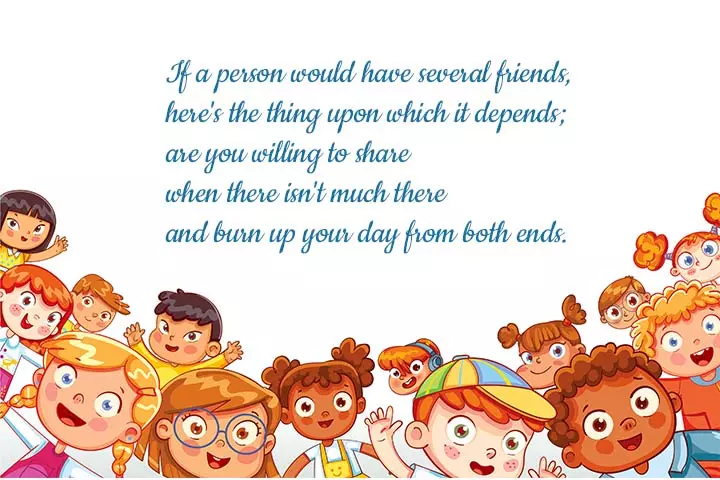
12. Boisterous Joe! by Edel T. Copeland
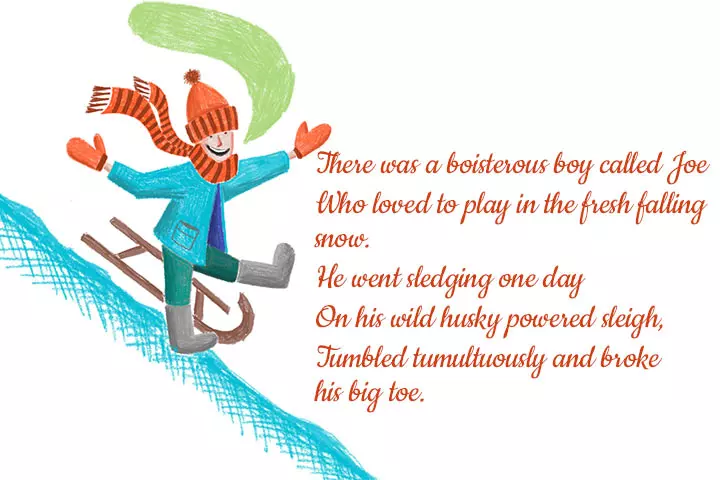
Frequently Asked Questions
1. From where did limericks originate?
Limericks first appeared in the 18th century in England. It is believed that the limerick form originated in France during the Middle Ages and then traveled across the English Channel. It is also widely known that Edward Lear made limericks popular through his book “A Book of Nonsense” in the 19th century.
2. How do I easily teach my child to write limericks?
Introduce your child to some basic limericks filled with humor that they can easily understand, and then guide them through the steps of writing a limerick. Encourage them to experiment and use their imagination to write limericks; with practice, they can perfect this creative writing form.
3. What are the three types of limerick?
American humorist and limerick expert Don Marquis identified three types of limerick. They are “limericks to be told when ladies are present, limericks to be told when ladies are absent but clergymen are present, and LIMERICKS.”
4. What is the difference between a poem and a limerick?
A poem is a broad term for a piece of writing that uses metaphors and imagery to evoke emotions and convey ideas. However, a limerick is a form of poetry with a distinct structure and is usually filled with humor. Limericks are considered to be sub-categories of poems.
5. Are limerick poems for kids easy to write?
Limerick poems for children are entertaining, catchy, and easy to remember. If you help your child understand the basic structure of a limerick, they will get an idea on how to write this quirky form of poetry.
6. How can limerick poems for kids be used in the classroom?
Limerick poems can be used to promote creativity and enhance learning among students in the classroom. They are one of the best ways to introduce children to poetry in an entertaining manner.
7. How can limerick poems for kids help with language development?
Limerick poems have a distinct structure and rhythm, which can help children expand their vocabulary and learn phonics. Reading limericks can help children become fluent readers, improve their oral communication skills, and have a basic understanding of creative writing. It can also help children improve memory retention because of their catchy rhythm and generally humorous subject matter.
8. What are some common themes in limerick poems for kids?
Some common themes found in limerick poems include whimsical situations, quirky characters, and a lot of humor. Like several English poems for kids, they can also have animal characters, everyday situations, nature, friendship, education, adventure, and moral lessons.
9. What are some common mistakes to avoid when writing limerick poems for kids?
Writing more than five lines, forced rhymes, absence of humor, inappropriate content, unoriginal content, and poor word choice are common mistakes to avoid when writing limerick poems for children.
10. How can kids perform or recite limerick poems in front of an audience?
First, let your child pick a limerick of their choice and help them memorize it. Explain the meaning of the poem so they can understand and retain the lines better. After practicing these lines, your child is ready to recite their limerick.
Introduce your children to these limerick poems to add a variety and comic feel to their study time. Read and recite these famous and simple limerick poems for kids and encourage them to pen down similar poems using their creative ideas by rhyming the words and following the rhythm. These rhyming poems for kids are great to improve your child’s vocabulary, language, and creative writing skills. Moreover, these quirky and fun poems could help you keep your child engaged while allowing you to spend some quality time with them.
Illustration: Quirky And Witty Limerick Poems For Kids
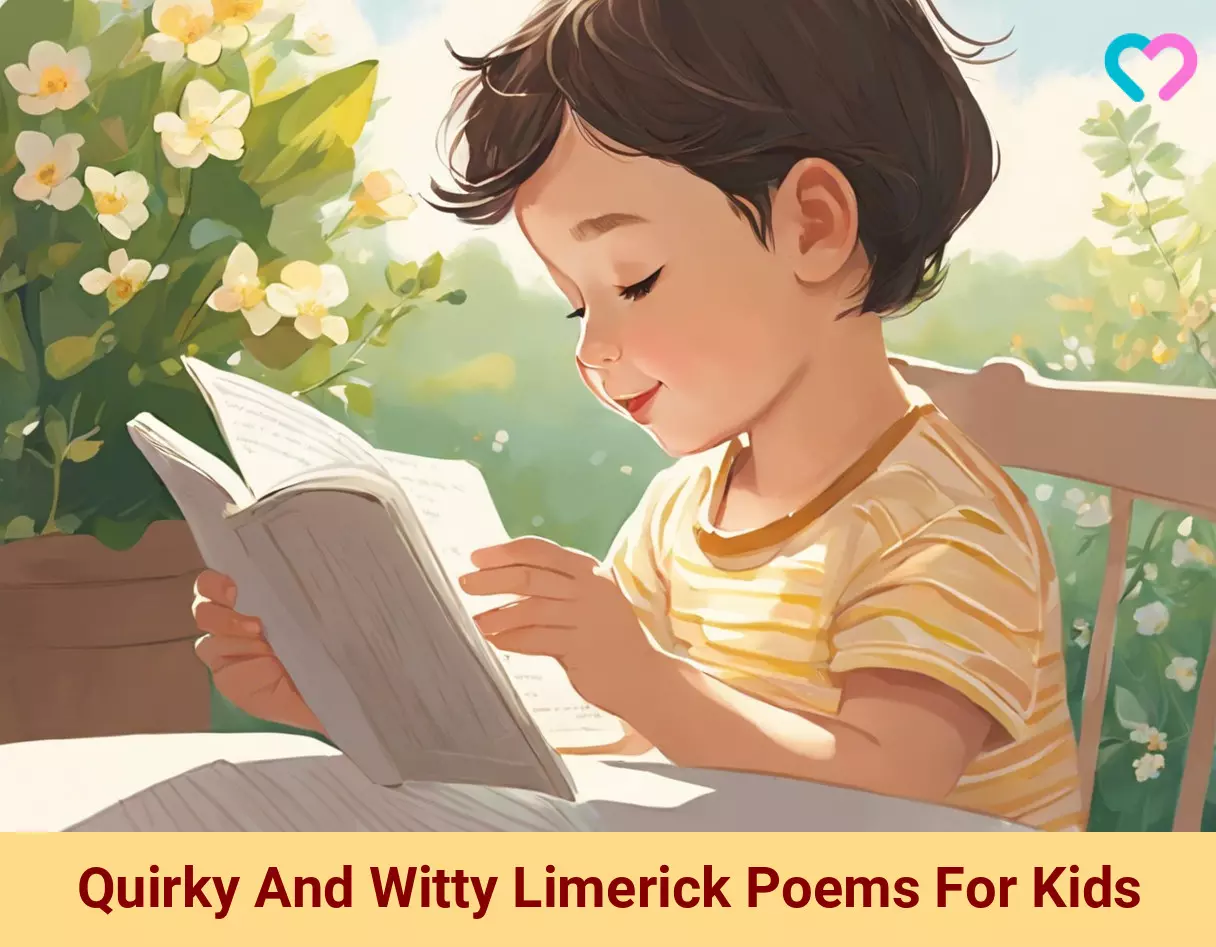
Image: Stable Diffusion/MomJunction Design Team
Let’s learn about limerick poems for kids from home! Join us as we explore the fun and creative world of limericks.
Personal Experience: Source
MomJunction articles include first-hand experiences to provide you with better insights through real-life narratives. Here are the sources of personal accounts referenced in this article.
i. A grad’s student experience writing a limerick.https://sdsuchildlit.blogspot.com/2020/10/a-grad-students-experience-writing.html
Community Experiences
Join the conversation and become a part of our nurturing community! Share your stories, experiences, and insights to connect with fellow parents.
Read full bio of Vinita Agrawal
Read full bio of Sravani Rebbapragada
Read full bio of Harshita Makvana
Read full bio of Benidamika J Latam













